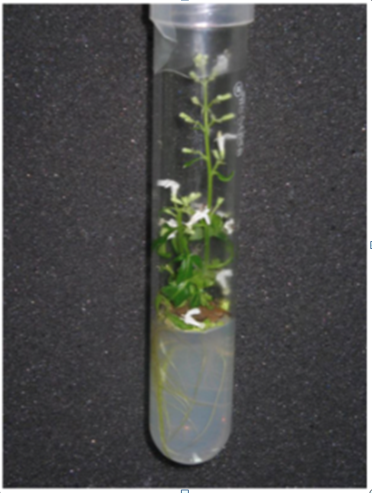An ecologist that studies the distribution of a frog species along a latitudinal gradient is performing
a(n)_______.
a. observational experiment
b. manipulative experiment
c. predictive experiment
d. lab experiment
e. modeling experiment
A
You might also like to view...
Organisms are composed of molecules, which are collections of smaller units, termed:
A. monomers. B. atoms. C. electrons. D. polymers. E. ions.
What is a limitation of mass-spectrometry in proteomics?
a. Mass spectrometry requires access to a particle accelerator. b. Mass spectrometry requires large quantities of protein for accurate results. c. Variations in protein structure caused by disease can be difficult to identify. d. Proteins are destroyed in the process, making results impossible to verify.
This photograph illustrates micropropagation, a form of artificial reproduction in plants. Which of these is unlikely to be an application for micropropagation?

a. preserving plants vulnerable to extinction
b. growing plants for experiments in labs
c. mass-producing grain for famine relief
d. breeding plants with pharmacological value
Which protein has been implicated in the development of Alzheimer's disease?
a. apolipoprotein A b. apolipoprotein M c. apolipoprotein G d. apolipoprotein B e. apolipoprotein E